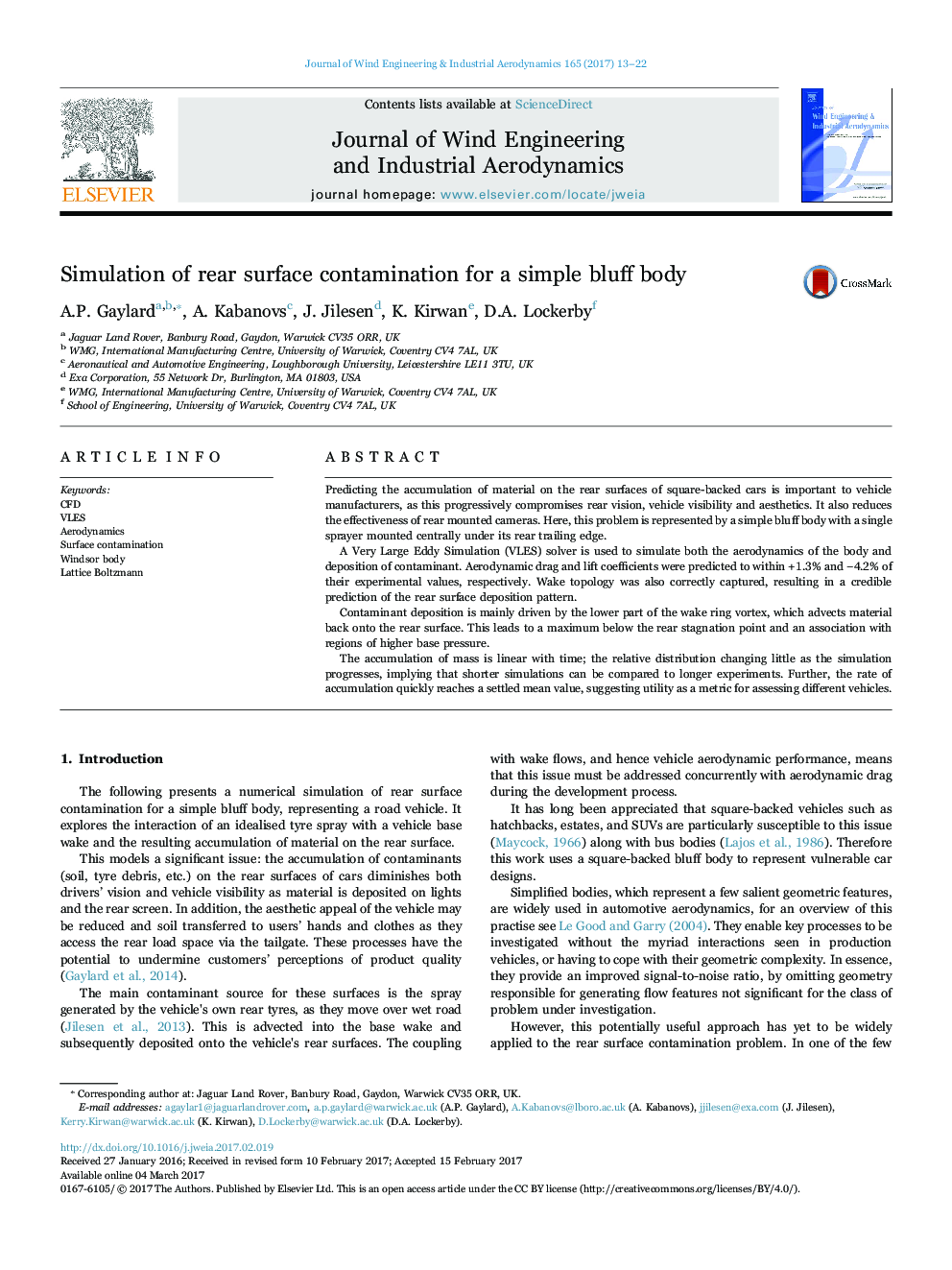| Article ID | Journal | Published Year | Pages | File Type |
|---|---|---|---|---|
| 4924906 | Journal of Wind Engineering and Industrial Aerodynamics | 2017 | 10 Pages |
â¢Spray deposition on the rear of a simple body modelled using eddy-resolving CFD.â¢Lower wake ring vortex arm is largely responsible for contaminant deposition.â¢The form of the distribution changes little as time advances.â¢Accumulation of deposited mass is linear with time.â¢Rate of accumulation may be a good metric for rear surface contamination.
Predicting the accumulation of material on the rear surfaces of square-backed cars is important to vehicle manufacturers, as this progressively compromises rear vision, vehicle visibility and aesthetics. It also reduces the effectiveness of rear mounted cameras. Here, this problem is represented by a simple bluff body with a single sprayer mounted centrally under its rear trailing edge.A Very Large Eddy Simulation (VLES) solver is used to simulate both the aerodynamics of the body and deposition of contaminant. Aerodynamic drag and lift coefficients were predicted to within +1.3% and â4.2% of their experimental values, respectively. Wake topology was also correctly captured, resulting in a credible prediction of the rear surface deposition pattern.Contaminant deposition is mainly driven by the lower part of the wake ring vortex, which advects material back onto the rear surface. This leads to a maximum below the rear stagnation point and an association with regions of higher base pressure.The accumulation of mass is linear with time; the relative distribution changing little as the simulation progresses, implying that shorter simulations can be compared to longer experiments. Further, the rate of accumulation quickly reaches a settled mean value, suggesting utility as a metric for assessing different vehicles.
Graphical abstractDownload high-res image (170KB)Download full-size image
